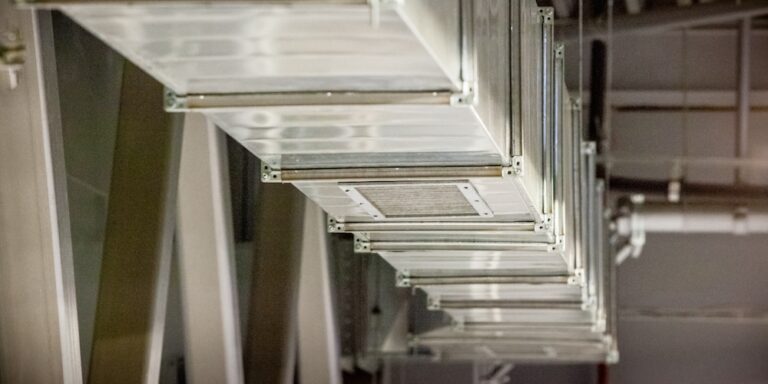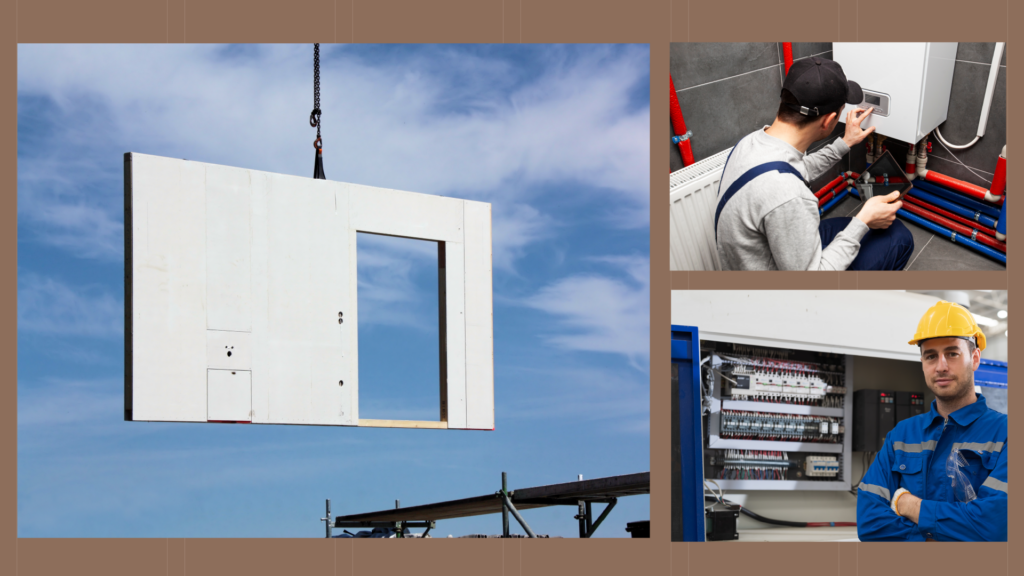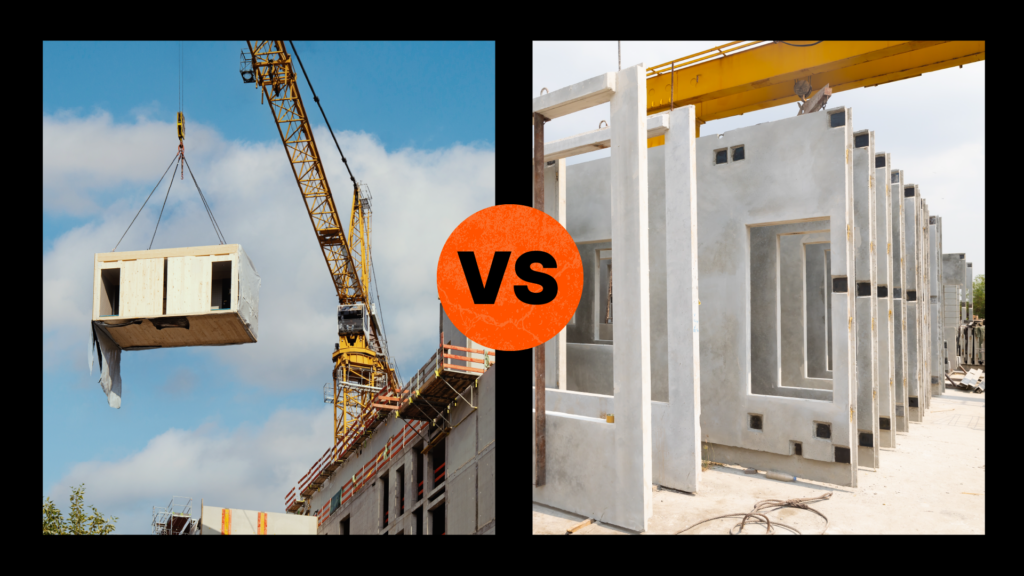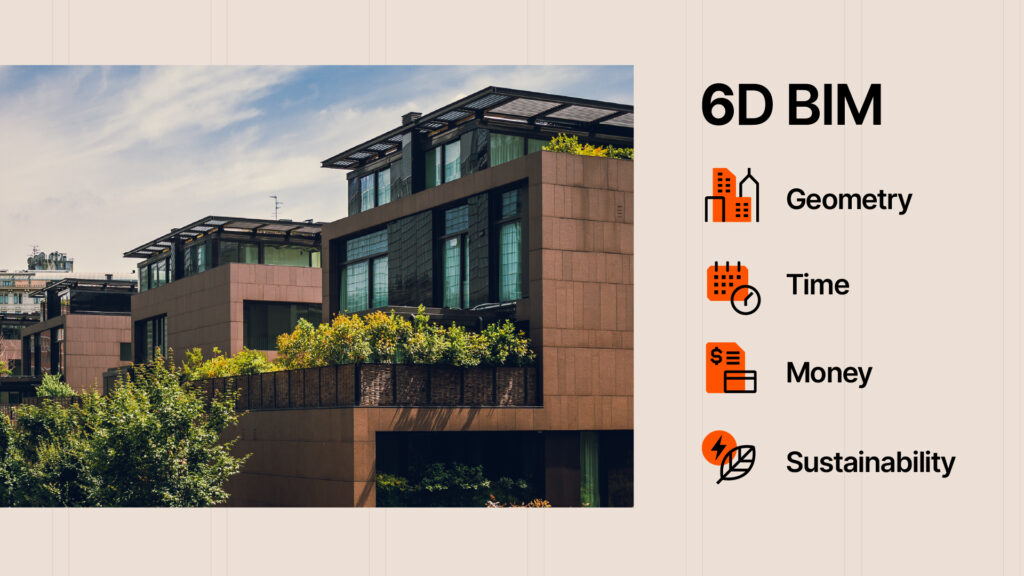— 8 min read
Construction Retrofitting: A Guide to Modernizing Existing Structures
Last Updated Feb 14, 2025
Last Updated Feb 14, 2025

Retrofitting offers exciting opportunities for the construction industry, as it breathes new life into existing structures. By using assets that are already built, retrofitting can be a sustainable and potentially lower-cost option to provide safe and usable buildings and infrastructure. Retrofitting may also allow opportunities to protect and refurbish historical properties.
This article will define retrofitting, talk about some common approaches to retrofit projects, and discuss use-cases and challenges to updating existing structures.
Table of contents
What is a Construction Retrofit?
Retrofitting is the process of altering or adding to existing structures to improve their performance, safety or efficiency so that they meet contemporary standards. Unlike renovations, which tend to focus on aesthetic updates, retrofitting often aims to enhance the overall functionality or integrity of a building or structure.
Examples of retrofits in a residential building might include:
- Upgrading insulation
- Installation of energy-efficient windows
- Upgraded HVAC systems
Common goals of retrofits often include extending a structure’s lifespan, reducing its environmental footprint or increasing its economic value.
Retrofits can be applied to any existing structure. Infrastructure projects are commonly retrofitted to improve performance or longevity. For example, federal or state agencies may retrofit a bridge to incorporate new engineering methods or technology to reduce the likelihood of collapse during earthquakes.
Major seismic activity can cause columns to collapse or hinges to unseat, which can cause a section of the bridge to drop. If it brings other sections with it, it can cause a lot of damage and lead to loss of life. Retrofits may include seat extenders and catchers, which can decrease the possibility of unseating, or using concrete, steel or timber to fill the gap between backwall and end diaphragms of a bridge’s superstructure. (For a much deeper dive into the technical aspects, check out the US Federal Highway Administration’s Seismic Retrofitting Manual.)
Retrofitting can present unique budgeting, scheduling and materials acquisition challenges to contractors because they’re dealing with a built structure – the concealed components of a structure may not always be readily apparent from an external assessment. Deconstructing these assets may reveal unforeseen complications.
The Impact of Retrofits on Modern Infrastructure
Retrofits can upgrade a building to comply with modern building codes, increasing its usability and safety. By making structures stronger to withstand time and natural events, retrofits may improve a community’s disaster resilience.
Retrofitting may be a more cost effective solution to improve assets than demolishing and building new. It often involves lower initial costs since it uses the existing structure, reducing the need for materials and labor associated with new construction. For the same reasons, retrofitting may result in a smaller environmental footprint compared to new construction.
The Empire State Building retrofit project serves as a prime illustration, with a $550 million investment translating into annual energy savings of approximately $4.4 million. This not only bolstered the building's market position but also ensured its long-term leasing success. These examples highlight the potential of retrofits to offer impressive returns, driven by reduced operating costs and enhanced asset longevity.
Common Reasons for Construction Retrofits
Owners may look at upgrading existing structures to make them more usable in the future, either by making them cheaper to run or safer to use.
Structural Upgrades
Residential buildings, bridges and public buildings can be retrofitted to buffer them against seismic action, high winds, floods and other natural disasters. In other cases, retrofits may be needed to correct a deficient structure through reinforcements, making the building safer for users. Retrofitting bridges, tunnels, and roadways increases safety, capacity, and longevity.
Modern Code Compliance
As building codes change over the years to make structures safer and more resilient, older structures often fall behind. Being out of compliance may impact their final usability and the safety, comfort or well-being of users.
Energy Savings
Older buildings may suffer from poor insulation, old windows, and inadequate heating, cooling and ventilation systems that make the building uncomfortable for users and inefficient to heat and cool. Updating these elements of a structure can reduce the energy it takes to heat and cool the space, reducing energy costs for the owner throughout the rest of the building’s lifespan.
Common Challenges to Retrofit Projects
Just like any other construction project, retrofits can be challenged by schedule and cost overruns, poor communication and delays. Retrofitting projects often face further challenges because in some older structures it’s hard to tell what’s behind the finished wall until demolition begins. Here are some of the more unique challenges to retrofit construction projects.
Regulatory Compliance
Building codes and regulations may be set with new builds in mind. Finding ways to upgrade existing systems to fit building codes can be challenging. For instance, building codes may require an upgraded ventilation system including larger ductwork, which can be difficult to fit into an existing building, especially when the owner wants to preserve a historical aesthetic.
Unexpected Conditions
When a wall comes down to reveal an unwanted surprise, such as the presence of black mold, its treatment may increase costs and impact schedules. Contingency planning may help projects stay on track in the face of such surprises.
Structural Integrity
When bolstering a structure for strength, contractors may encounter old material deterioration or weakened structural elements. The team may need to problem solve to complete upgrades without impacting the safety and longevity of the building.
Financial Considerations and Incentives
Embarking on a retrofitting project often involves notable upfront costs, but the good news is there are a variety of financing options and incentives that can help manage these expenses. Owners and contractors should consider government-backed loans aimed at promoting energy efficiency, like the Energy Efficient Mortgage (EEM) program, which supports homeowners in financing improvements that cut down energy use. Additionally, Property Assessed Clean Energy (PACE) financing is a popular choice in many states, allowing property owners to fund retrofits through their property taxes.
For projects focused on historical preservation, both federal and state levels offer grants and tax incentives. The Federal Historic Preservation Tax Incentives program, for instance, offers an income tax credit for rehabilitating certified historic structures. Tapping into these financial resources can significantly lower the overall cost of retrofit projects, making them not just viable, but highly appealing.
Return on Retrofit Investment
The return of investment for a retrofitting can be very personal. For instance, a community may not be able to put a price on how much a historic building is worth to them, and retrofitting that building to stand the length of time may be worth more than any dollar amount.
However, generally speaking, investing in retrofitting can greatly enhance property value and deliver a strong return on investment, often surpassing new construction in cost-effectiveness. By upgrading existing structures to align with modern efficiency standards, safety regulations, and code compliance, property owners can boost market appeal and achieve substantial operational savings.
Take, for example, the retrofit of a commercial building with energy-efficient HVAC systems and smart lighting; such upgrades can slash utility costs, increase net operating income (NOI) and potentially elevate property value.
Practical Applications of Construction Retrofits
Retrofits can help make existing structures safer and smarter for modern use. When it comes to housing, these changes can make a huge difference to the country’s energy usage.
Residential
An Oak Ridge National Laboratory (ORNL) project is proving how effective retrofits to residential buildings can be while minimizing disruptions to their residents.
About half of existing American homes were built before energy codes were in place. Heating, cooling, lighting and powering America’s homes represents almost a fifth of the total national primary energy consumption, so retrofits may be a great opportunity for optimization. The ORNL project aimed to reduce the thermal loads of Knoxville’s Community Development Corporation duplexes by 75%.
The project plans to fit 1940s-era duplexes with overclad panels as air, water and moisture barriers, fiberglass window frames, heat pump water heaters and variable refrigerant heat pumps for air conditioning to lower electricity use by at least half.
Civil
The Golden Gate Bridge has been subject of a phased retrofit since 1997, which aims to improve its resilience to earthquakes. The first phase involved work to the Marin Approach Viaduct, including strengthening its foundations, replacing four supporting steel towers and replacing and adding top and bottom lateral bracing.

The Future of Retrofit Construction
Building Information Modeling (BIM) is revolutionizing the retrofit construction industry, offering a robust tool that reshapes both project planning and long-term asset management. By generating detailed 3D models of existing structures, BIM enables contractors to meticulously visualize retrofit projects before any physical work begins.
This capability allows for the early identification of structural weaknesses and the simulation of various retrofitting techniques, providing a comprehensive understanding of the building’s current state and the effects of proposed modifications. This foresight helps prevent costly on-site surprises and rework, streamlining the construction process.
Beyond the construction phase, BIM models can evolve into digital twins—dynamic, digital replicas that mirror the physical building's performance in real-time. These digital twins are invaluable for post-construction management, offering ongoing insights into building operations, maintenance needs, and performance metrics. They enable property owners and managers to optimize building efficiency, foresee maintenance issues, and plan upgrades effectively.
Was this article helpful?
Thank you for your submission.
100%
0%
You voted that this article was . Was this a mistake? If so, change your vote here.
Scroll less, learn more about construction.
Subscribe to The Blueprint, Procore’s construction newsletter, to get content from industry experts delivered straight to your inbox.
By clicking this button, you agree to our Privacy Notice and Terms of Service.
Categories:
Tags:
Written by
Kristen Frisa
67 articles
Kristen Frisa is a contributing writer for Procore. She also contributes to a variety of industry publications as a freelance writer focused on finance and construction technology. Kristen holds a Bachelor of Arts in Philosophy and History from Western University, with a post-graduate certificate in journalism from Sheridan College. She lives in Ontario, Canada.
View profileExplore more helpful resources

Modular Construction and MEP: A Collaborative Pairing
In an age of supply chain disruptions, workforce shortages, and rising material costs, off-site construction — including modular construction methods and prefabricated materials — is surfacing as a multipurpose solution....

Connected Construction: Transforming the Industry Through Integration
Construction projects are becoming increasingly complex, so companies need to innovate to accurately and profitably complete these modern structures. Connected construction — using technology and data to improve communication, processes...

Off-Site Construction: Prefab vs. Modular
As the construction world becomes ever more competitive, deadlines get tighter and the margin for error gets slimmer, project owners around the world are always looking for an edge. Thanks...

The Role of BIM in Sustainable Construction
Building information modeling (BIM) is transforming the architecture, engineering, and construction (AEC) industry. With this kind of sophisticated modeling, the industry has shifted from designing in 2D to 3D. This helps...